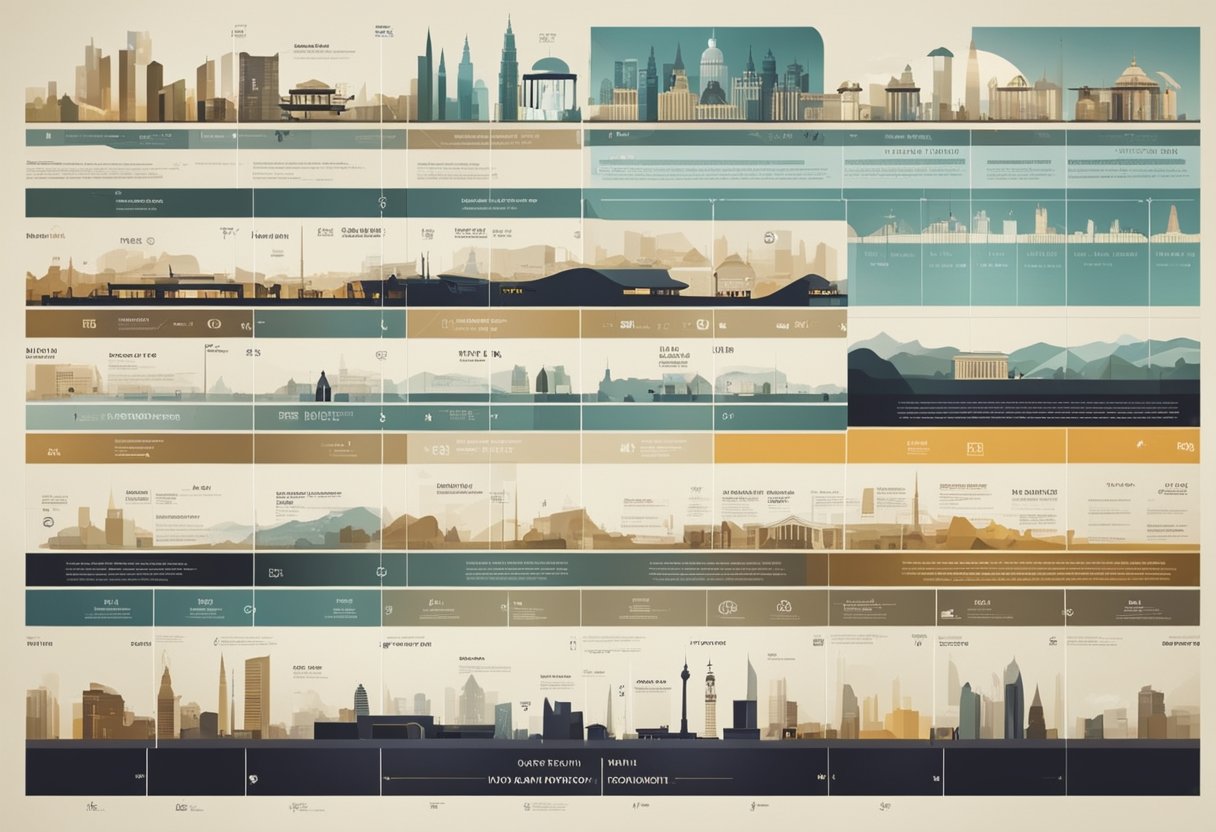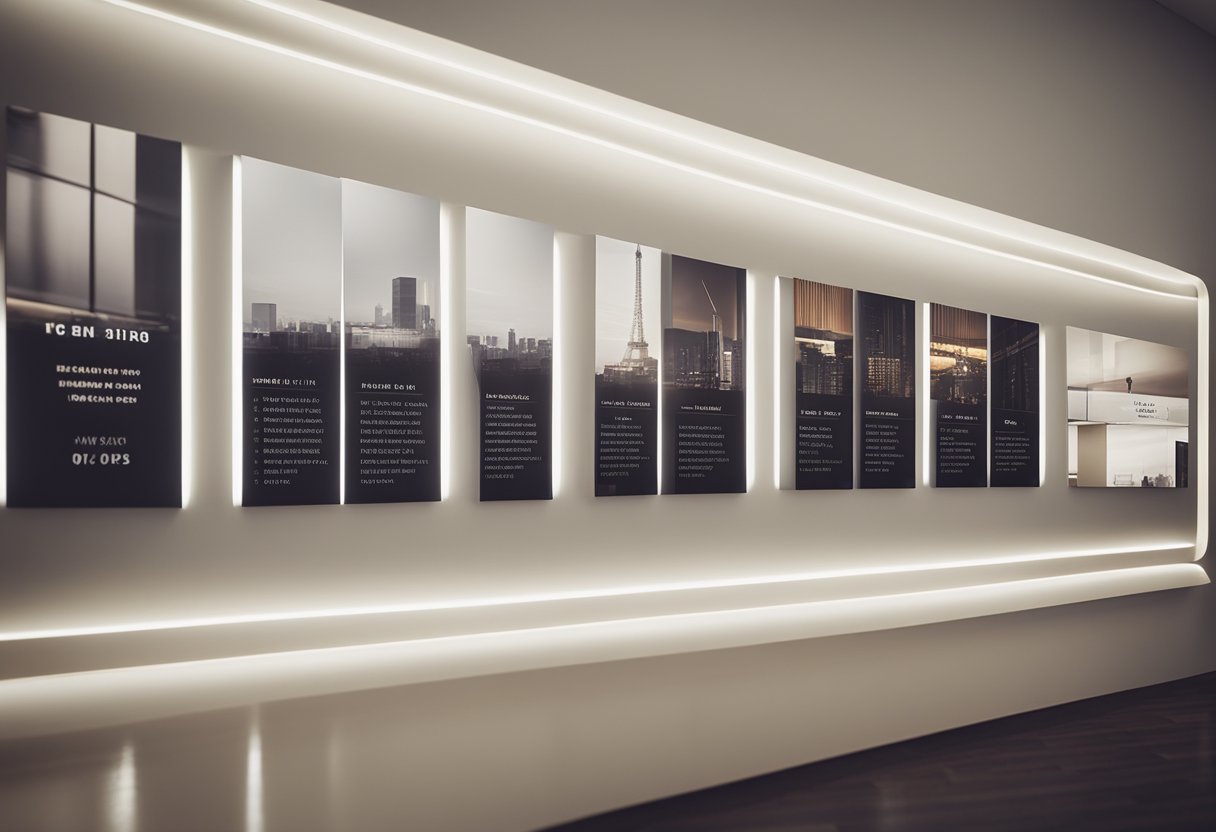History of Interior Design Timeline: A Fascinating Journey Through the Evolution of Home Decor
If you’re interested in interior design, you may be curious about its history and how it has evolved over time. The history of interior design is a rich and fascinating topic that spans thousands of years and encompasses a wide range of styles and movements. From the ancient Egyptians to modern-day designers, the practice of interior design has undergone numerous transformations and has been shaped by a variety of cultural, social, and technological influences.

The foundations of interior design can be traced back to ancient civilizations such as Egypt, Greece, and Rome, where the art of decorating and furnishing interiors was already well established. Over time, interior design has continued to evolve, with new styles and movements emerging in response to changing cultural and social trends. Today, interior design is a thriving industry that encompasses everything from residential and commercial spaces to hospitality and healthcare environments.
Key Takeaways
- The history of interior design spans thousands of years and encompasses a wide range of styles and movements.
- Interior design has been shaped by a variety of cultural, social, and technological influences throughout history.
- Today, interior design is a thriving industry that encompasses a wide range of spaces and environments.
Foundations of Interior Design

Interior design has been an essential aspect of human life since ancient times. It has evolved through the ages, influenced by art, history, function, and culture. In this section, we will explore the foundations of interior design and how it has evolved over time.
Ancient Civilisations and Early Influences
Ancient civilizations such as Egypt, Greece, and Rome were pioneers in interior design. They used art and architecture to create functional yet aesthetically pleasing spaces. Ancient Egyptians used furniture, wall paintings, and sculptures to decorate their homes and temples. Ancient Greeks and Romans used columns, arches, and domes to create grandeur in their buildings.
Evolution Through the Ages
Interior design evolved through the medieval period, the Renaissance, Baroque, Rococo, and Neoclassical periods. The Victorian era saw the rise of ornate furniture, heavy drapery, and dark colours. The 18th and 19th centuries were marked by a focus on functionality, simplicity, and clean lines.
The Birth of Modernism
The 20th century saw the birth of modernism, a movement that emphasized simplicity, functionality, and the use of new materials. Art Nouveau and Art Deco styles emerged, characterized by their use of geometric shapes and bold colours.
Key Elements and Principles
Interior design is based on key elements such as balance, proportion, and scale. The use of colour, texture, and light also plays a significant role in creating a space that is aesthetically pleasing. Functionality is also a key consideration, with designers seeking to create spaces that are both beautiful and practical.
Cultural and Regional Influences
Cultural and regional influences have played a significant role in shaping interior design. Asian, Indian, and European cultures have all contributed to the evolution of interior design. Egyptian, Greek, and Roman styles have also had a lasting impact on interior design.
Technological Advancements and New Materials
Technological advancements and new materials have revolutionized interior design. The Industrial Revolution brought mass production of furniture and other interior design elements. New materials such as plastic, metal, and glass have also been used to create innovative designs.
Sustainability and Future Trends
Sustainability is a growing trend in interior design, with designers seeking to create spaces that are environmentally friendly. The use of natural materials, energy-efficient lighting, and sustainable furniture is becoming increasingly popular. As we move into the future, we can expect to see more emphasis on sustainability in interior design.
In conclusion, interior design has a rich history that has been shaped by art, history, function, and culture. It has evolved through the ages, influenced by technological advancements, new materials, and sustainability. As we move into the future, we can expect to see continued innovation and creativity in the field of interior design.
Iconic Styles and Movements

Interior design has evolved over time, influenced by various cultures, periods, and movements. From classical and ornate expressions to contemporary trends and future directions, the history of interior design is a fascinating journey. In this section, we’ll explore some of the most iconic styles and movements that have shaped the field of interior design.
Classical and Ornate Expressions
Classical interior design draws inspiration from ancient Greek and Roman architecture, featuring columns, marble, and gold accents. Ornate motifs and stained glass windows were also popular during this time. Palaces and grand homes were decorated with paintings, textiles, murals, and carpets. Symmetry and elegance were key design elements, creating an aesthetically pleasing and harmonious space.
Revolutionary Designs and the Avant-Garde
The Industrial Revolution brought about a significant change in interior design, with the rise of minimalist and functional styles. Art Nouveau and Art Deco movements emerged in the early 20th century, featuring clean lines, natural materials, and decorative elements. Mirrors, vases, and tapestries were used to add a touch of luxury and drama to the space.
Contemporary Trends and Future Directions
Contemporary interior design is all about sustainability, natural materials, and clean lines. Minimalism is still a popular trend, with a focus on functionality and practicality. Aesthetically pleasing design elements are combined with the latest technology to create a futuristic and modern space.
Decoration and Detailing
Interior design is not just about furniture and colours, it’s also about the little details that make a space truly unique. Porcelain, bronze, and other decorative objects are used to add character and personality to the room. Tapestries and fabrics can be used to create a cosy and inviting atmosphere.
Influence of Power and Society
Throughout history, interior design has been influenced by power and society. The palaces of kings and queens were decorated with the finest materials and designs, showcasing their wealth and status. Today, interior design is more accessible to everyone, with a focus on creating a space that reflects your personality and lifestyle.
Functionality Meets Aesthetics
Interior design is not just about aesthetics, it’s also about functionality. The space should be designed to meet your needs and lifestyle. Furniture should be comfortable and practical, while still being aesthetically pleasing. The use of space and lighting can also greatly impact the functionality and atmosphere of the room.
Global Inspirations
Interior design is not limited to one culture or style. Asian, Indian, Egyptian, Roman, Greek, and European influences can all be seen in modern interior design. Eclectic styles that combine different cultures and periods are also becoming popular, creating a unique and personalised space.
Fusion of Tradition and Modernity
Interior design is constantly evolving, with new trends and styles emerging every year. However, there is also a growing trend towards combining traditional and modern elements to create a timeless and elegant space. This fusion of tradition and modernity creates a space that is both functional and aesthetically pleasing, reflecting the best of both worlds.
Frequently Asked Questions

How did interior design evolve from the Stone Age to modern times?
Interior design has evolved dramatically from the Stone Age to modern times. In ancient times, interior design was primarily focused on utilitarian purposes, such as keeping a space warm and dry. As societies became more advanced, interior design began to incorporate more decorative elements, such as murals, mosaics, and textiles. During the Renaissance period, interior design became more ornate, with lavish furnishings and decorations. In the 20th century, interior design became more focused on functionality and minimalism, with a focus on clean lines and simplicity.
What are the key milestones in the history of American interior design?
The history of American interior design is rich and varied, with many key milestones along the way. One of the earliest milestones was the Colonial period, which saw the emergence of the American style of interior design. This was followed by the Victorian era, which was marked by elaborate furnishings and decorative elements. The Arts and Crafts movement, which emerged in the late 19th century, was a reaction against the excesses of the Victorian era and focused on simplicity and craftsmanship. In the mid-20th century, the mid-century modern movement emerged, which was characterized by clean lines, simple forms, and a focus on functionality.
Could you trace the major historical styles that have shaped interior design?
Interior design has been shaped by a number of major historical styles, including Ancient Egyptian, Greek, and Roman styles, Gothic, Renaissance, Baroque, Rococo, Neoclassical, Art Nouveau, Art Deco, Mid-century modern, and Contemporary. Each of these styles has its own unique characteristics and has influenced the development of interior design in different ways.
When did the contemporary interior design movement begin and what are its defining features?
The contemporary interior design movement began in the late 20th century and is characterized by a focus on clean lines, minimalism, and functionality. Contemporary interior design often incorporates natural materials, such as wood and stone, and features a neutral colour palette. Furniture and accessories are often simple and understated, with a focus on functionality and practicality.
What are the origins and significant developments in traditional interior design?
Traditional interior design has its origins in the ancient world, with Ancient Egyptian, Greek, and Roman styles influencing the development of traditional interior design. In the Middle Ages, Gothic architecture and design emerged, which was characterized by ornate decorations and rich materials. During the Renaissance, interior design became more elaborate, with a focus on symmetry and proportion. In the 18th century, Rococo emerged, which was characterized by elaborate decorations and a focus on luxury.
Which period is considered the birthplace of structured interior design practices?
The birthplace of structured interior design practices is often considered to be the Industrial Revolution, which saw the emergence of mass production techniques and a focus on functionality and efficiency. This led to the development of structured interior design practices, which focused on creating functional and efficient spaces that were designed to meet the needs of the people who used them.



